The Royal Docks
The area is named after three docks – the Royal Albert Dock, the Royal Victoria Dock and the King George V Dock. They are more correctly called the Royal Group of Docks to distinguish them from the Royal Dockyards, Royal being due to their naming after royal personages rather than Crown ownership. The three docks collectively formed the largest enclosed docks in the world, with a water area of nearly 250 acres (1.0 km2) and an overall estate of 1,100 acres (4.5 km2). This is equivalent to the whole of central London from Hyde Park to Tower Bridge.
The three docks were completed between 1855 and 1921 on riverside marshes in East Ham and West Ham (now the London Borough of Newham). The Victoria and Albert docks were constructed by the London & St Katharine Docks Company, to provide berths for large vessels that could not be accommodated further upriver. They were a great commercial success, becoming London's principal docks during the first half of the 20th century. They specialised particularly in the import and unloading of foodstuffs, with rows of giant granaries and refrigerated warehouses being sited alongside the quays. The docks' great size and provision of numerous finger quays gave them a collective span of over 12 miles (19.3 km) of quaysides, serving hundreds of cargo and passenger ships at a time. Following the opening of the Royal Albert Dock in 1880, giving the Royals access to Gallions Reach, 11 miles (17.7 km) below London Bridge, the rival East & West India Docks Company responded with the construction of Tilbury Docks even further down river. The ruinous competition led eventually to all the enclosed docks being taken over by the Port of London Authority (PLA) in 1909. The PLA completed the King George V Dock in 1921 and reserved land to the north for a fourth dock, never built.
The Victoria dock in 1973
The General Strike of 1926 hit the Royal Docks hard, with 750,000 frozen carcasses threatened by the docks' electrical supply being cut off. Fortunately for the dock owners, the Royal Navy were able to save the day by connecting the generators of two submarines to power the warehouses' freezers.
Although the Royal Docks suffered severe damage from German bombing in World War II, they recovered after the war but suffered a steady decline from the 1960s onwards, following the adoption of containerization. Nonetheless, they survived longer than any of the other upstream docks, finally closing to commercial traffic only in 1981. The docks' closure led to high levels of unemployment and social deprivation in the surrounding communities of North Woolwich and Silvertown.
Because of their relative remoteness from central London and poor transport links, the redevelopment of London's Docklands has proceeded more slowly in the Royals than in the other former docks. The London Docklands Development Corporationundertook much work during the 1980s and 1990s to improve local transport and promote new residential and commercial developments in the area. Thousands of new homes were built at Beckton, just north of the Royal Docks.
An extension of the Docklands Light Railway (DLR) opened in 1994 to provide direct links to the City of London and Canary Wharf. This was later extended round the south side of the docks with the link to London City Airport opening in December 2006. The line was later extended to Woolwich. Crossrail will serve the area from 2018.
Several other major projects have been proposed or implemented since then. Many residential complexes have been built; most notably the architecturally progressive Eastern Quay on the south side of Royal Victoria Dock, Capital East on the north side of the dock and the large complex of Gallion's Reach in the extreme east of the Royal Docks. A series of major developments have seen the construction of a new university campus (for the University of East London) and the ExCeL Exhibition Centre, among much else. The Royal Docks have also seen the development of London City Airport (code LCY), opened in 1988 on the quay between the Royal Albert Dock and the King George V dock. While the docks themselves have been preserved largely intact, little remains of the old infrastructure, although some historic warehouses and cranes have been preserved.
In 2011 the one hundred and twenty five hectares of the Royal Docks were granted Enterprise Zone status to help attract jobs and businesses to the area.
In 2014, Singapore listed Oxley Holdings together with leading developer Ballymore UK have a Joint-Venture to set up a new waterfront township of Royal Wharf, with 3,385 new homes housing over 10,000. This will be a mixed-use development comprising shops, restaurants and even office complexes. The final phase is known as Mariner's Quarter which has the tallest building standing at 19 storeys, overseeing the river Thames and Canary Wharf.
There is now a multi-disciplinary team working on the Royal Docks development and regeneration. (https://www.royaldocks.london)

1972 . Royal Victoria dock cranes
The old warehouses to the left and the entrance to Pontoon dock and the flour mills on the right. The docks were still operating, just!
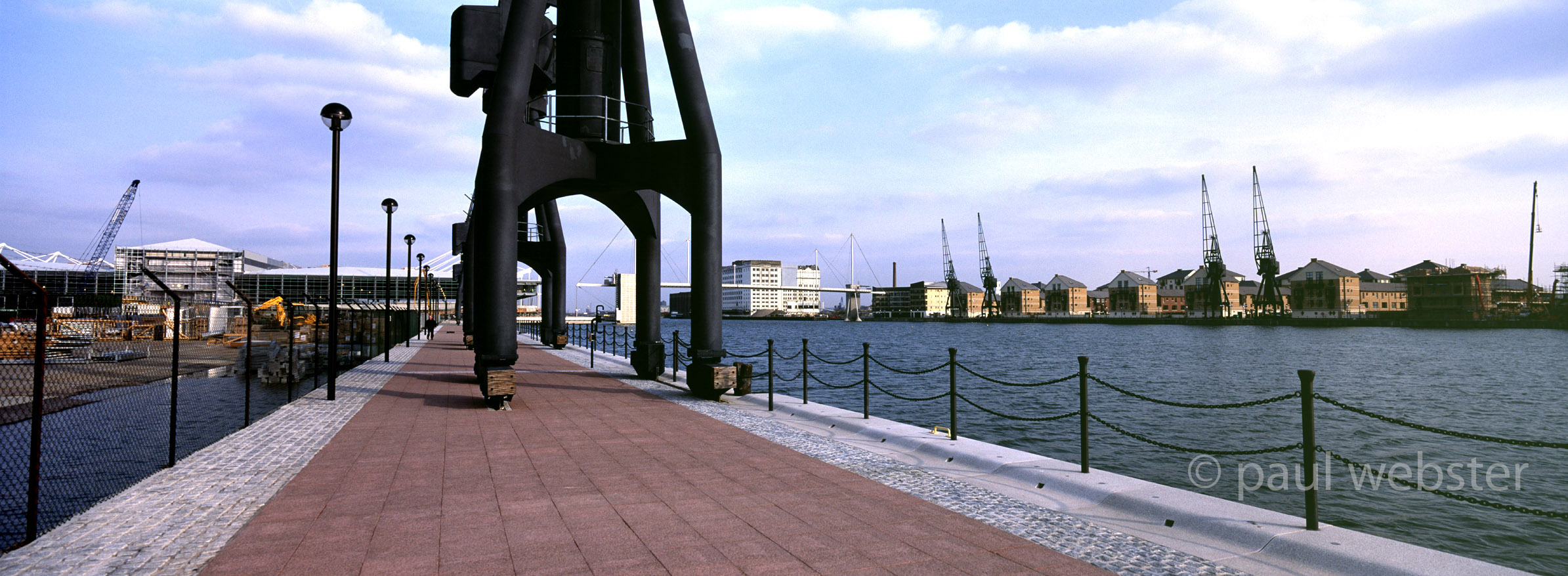
2003. Victoria dock cranes
Now replaced by decorative non-functional cranes with the new Excel exhibition centre completed and hotels being constructed with the new residential "Britannia Village" to the right with access across the dock using the new Royal Victoria footbridge linking to Excel and the London Dock Railway station.

2018.Royal Victoria Dock
New residential developments left and right, and at the end the Sunborn floating hotel in front of Excel exhibition centre and the pedestrian Royal Victoria Bridge. The old flour mills remain to be developed by the Silvertown Partnership whose planning application in 2019 has been approved.
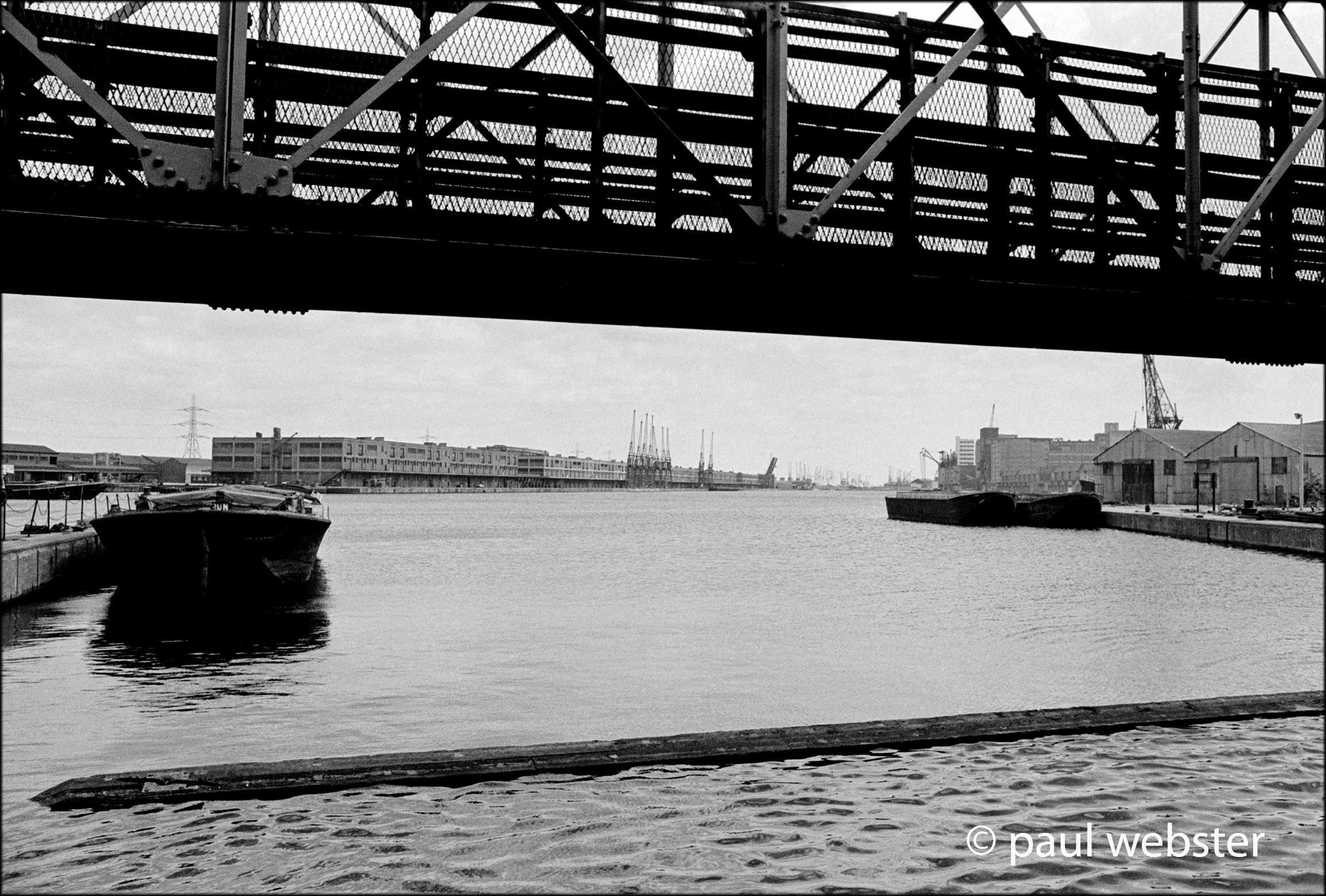
1971. Royal Victoria Dock
Now ending its operational life for commercial shipping with a few barges and some warehouses still in use.

2000. Royal Victoria Dock
Excel exhibition centre construction well under way and the new Victoria dock footbridge now open. Sailing boats replacing the cargo ships and barges .
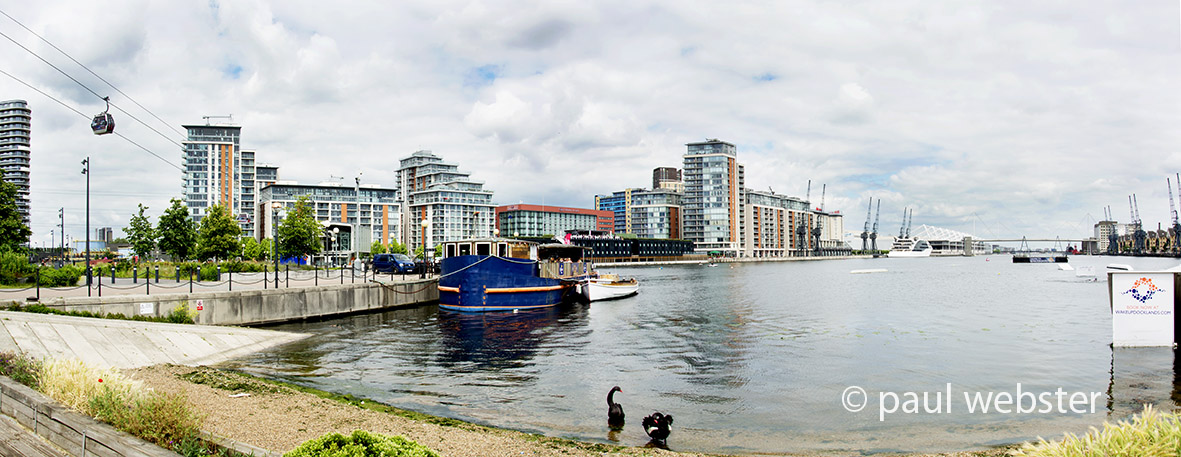
Royal Victoria Dock 2018
2018 Royal Victoria Dock with many new hotels including Crowne Plaza, the floating Sunborn Hotel and the Good Hotel, on the left the Emirates Cable car station. Excel exhibition centre is beyond Sunborn and the Royal Victoria footbridge is also visible.

1972. Royal Victoria dock basin
Looking West to old entrance and the Thames, the meat warehouses to the right with barges still present. Beyond the Greenwich Peninsula awaiting its new occupant, The Dome.
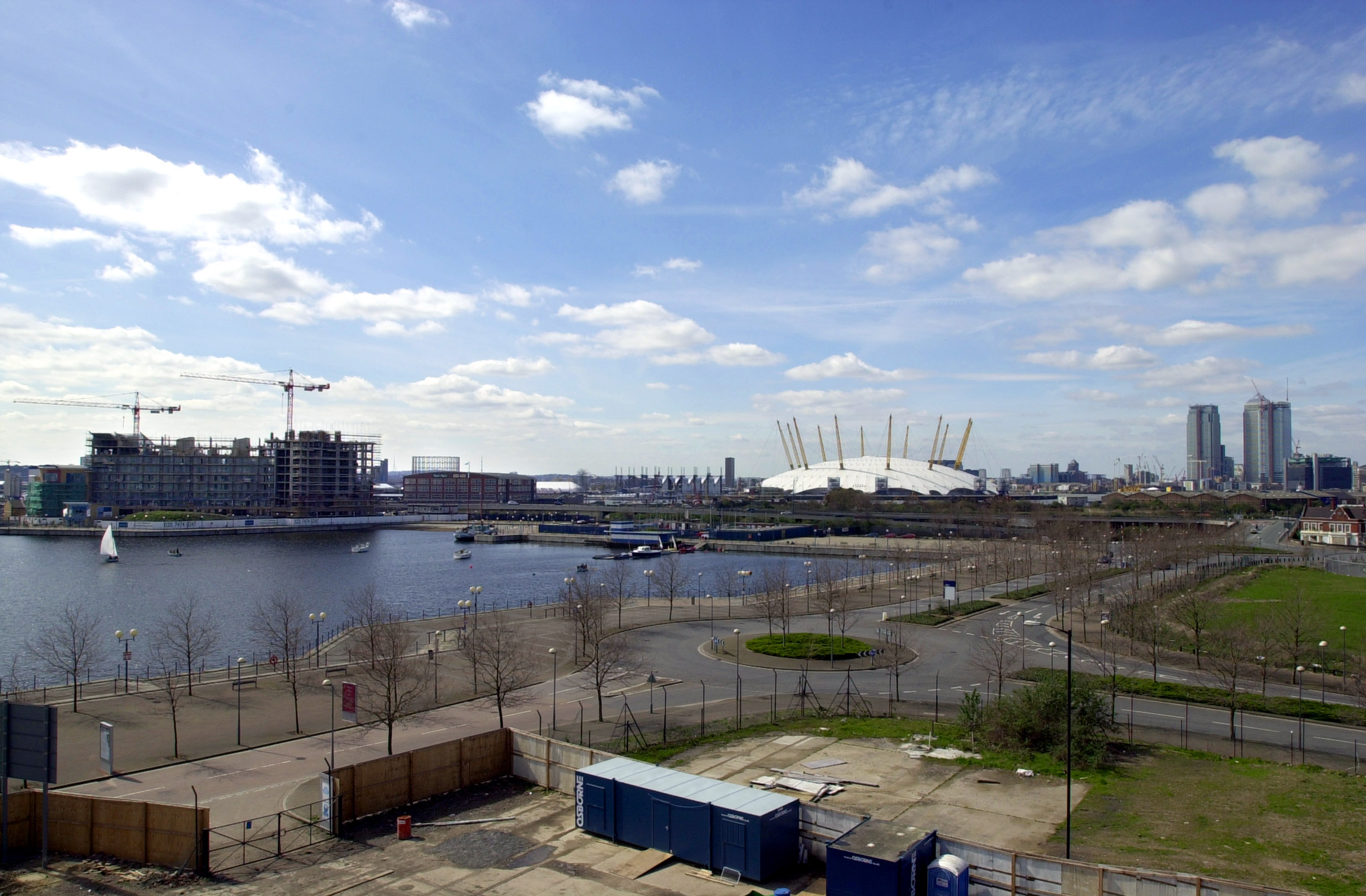
2001. Royal Victoria dock
The old entrance is now closed. Looking west to the Dome, the new HSBC and Citibank towers alongside Canary Wharf to the right and to the left the nearly completed "Western Beach " apartments.

Royal Victoria Dock basin 2018
The floating “ Good Hotel London” which was towed all the way from Amsterdam with to the right the twin towers of “Hoola” a residential development by Strawberry Star. Over the top of the hotel and just visible the O2 Dome.

1972. Royal Victoria Dock warehouses
Looking East the functional warehouses about to disappear with the old tobacco warehouses beyond.

2002. Royal Victoria Dock car park.
Warehouses have become an Excel car park and a site for new hotels.
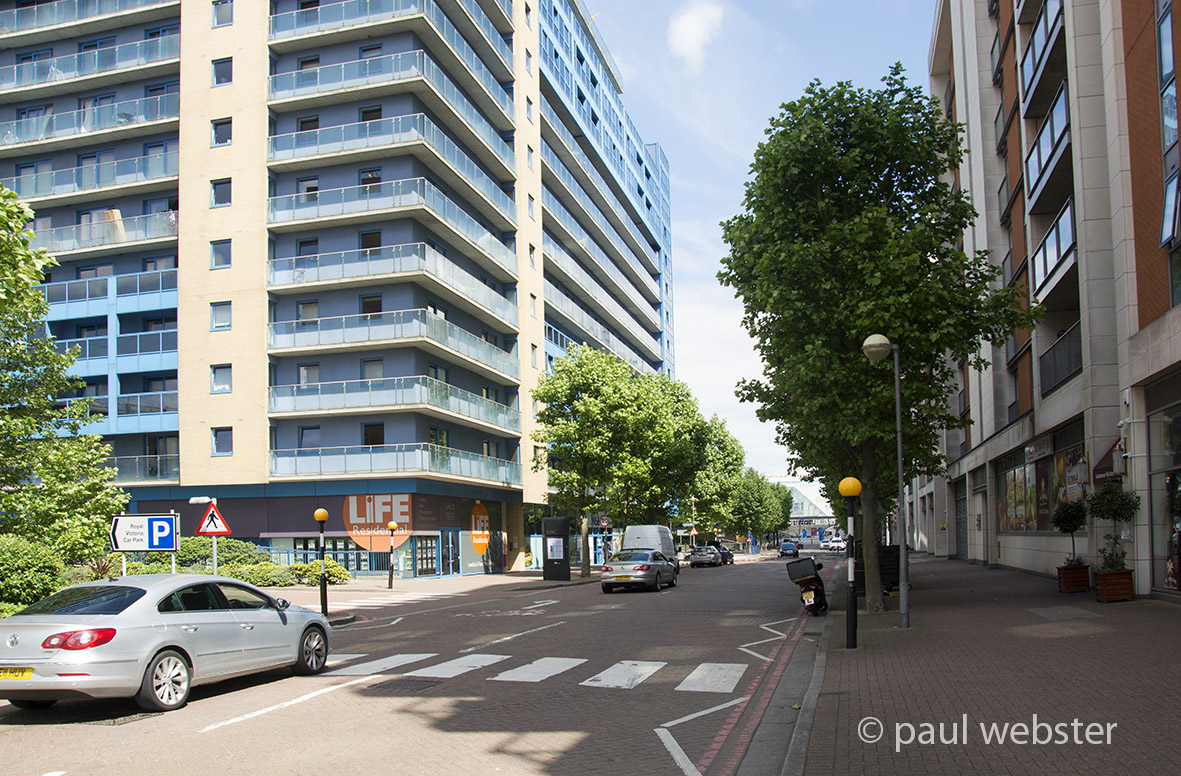
2018. Royal Victoria Docks
New apartment blocks and hotels now replace the old warehouses. The sign shows where the old car park still stands hidden behind the new developments and Excel is visible at the end of the road.
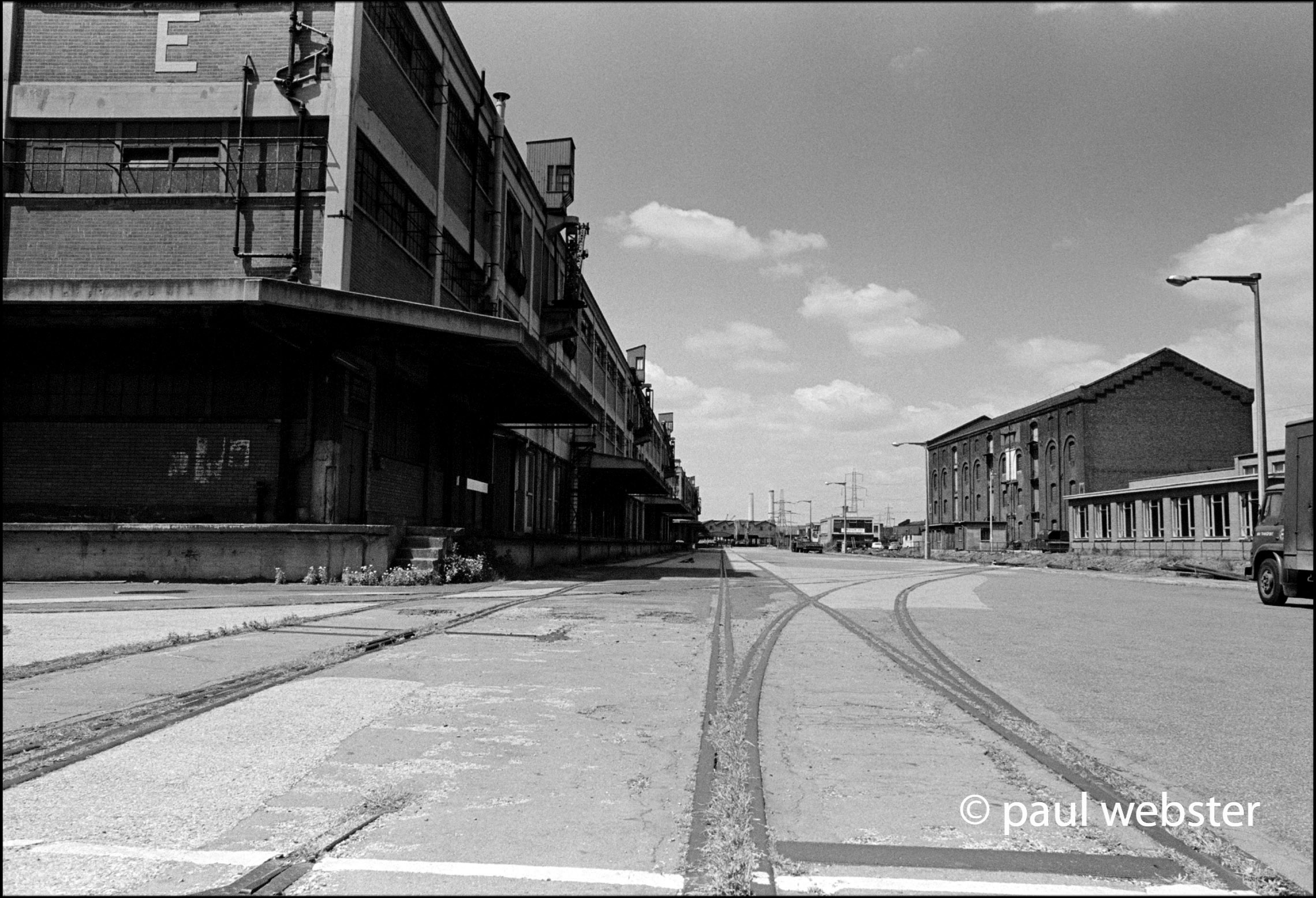
1972. Royal Victoria Dock warehouses
A view West to the old meat sheds.
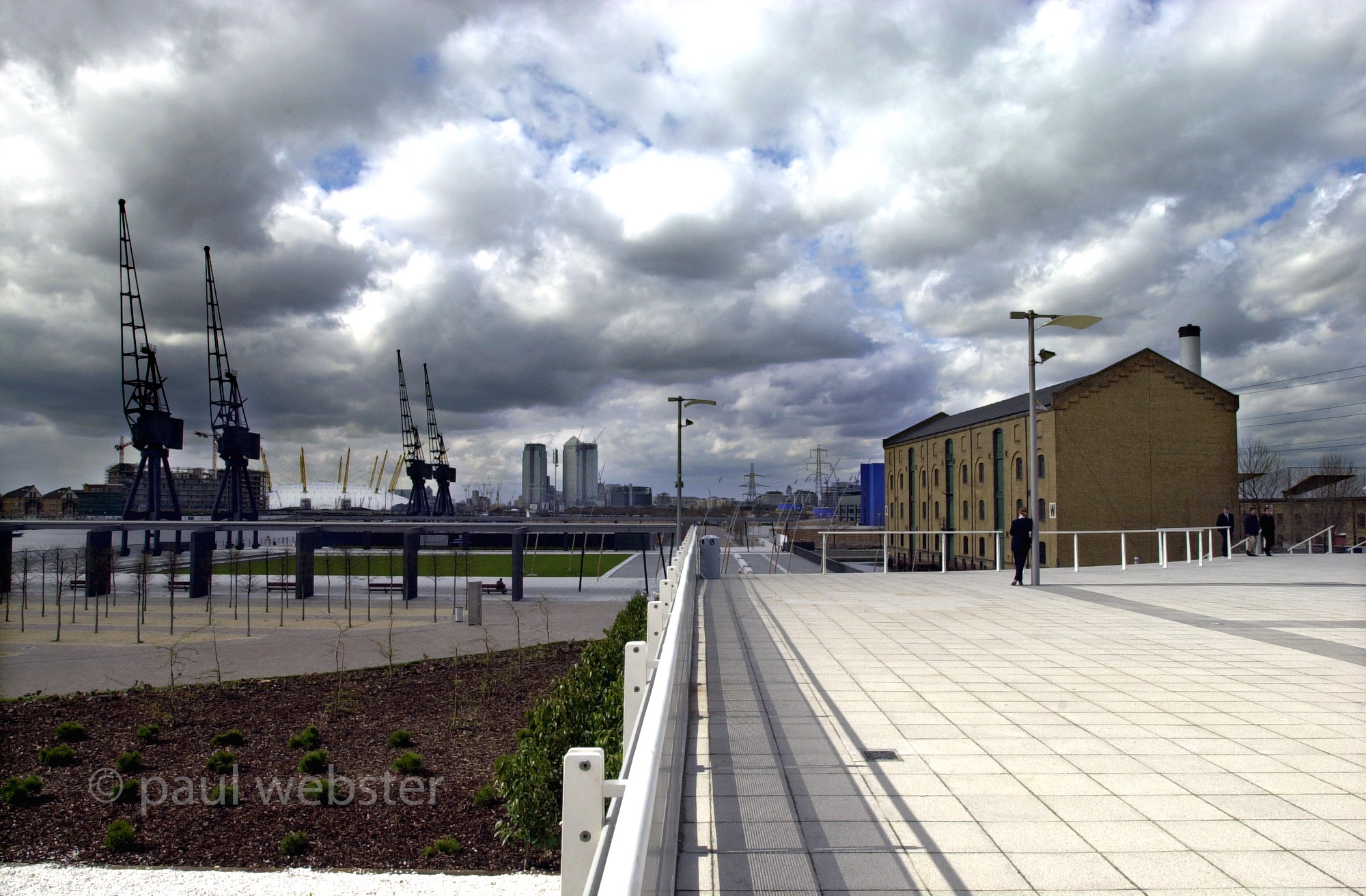
2002. Royal Victoria Dock warehouses
Looking West with "W" warehouse retained as a store for the London Dockland museum but the remainder already demolished to make way for the future.
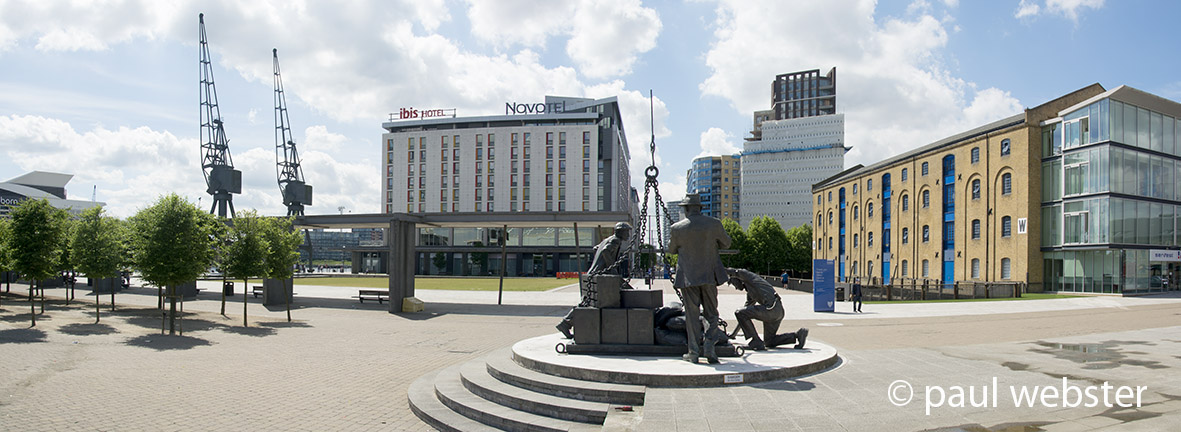
2018. Royal Victoria Dock warehouse “W”
W” now to become apartments with a new memorial statue in the foreground by Les Johnson funded by charity to remember the Royal Docks communities since 1855. Beyond are the newly finished residential blocks and hotels, with the floating Sunborn Hotel to the left.
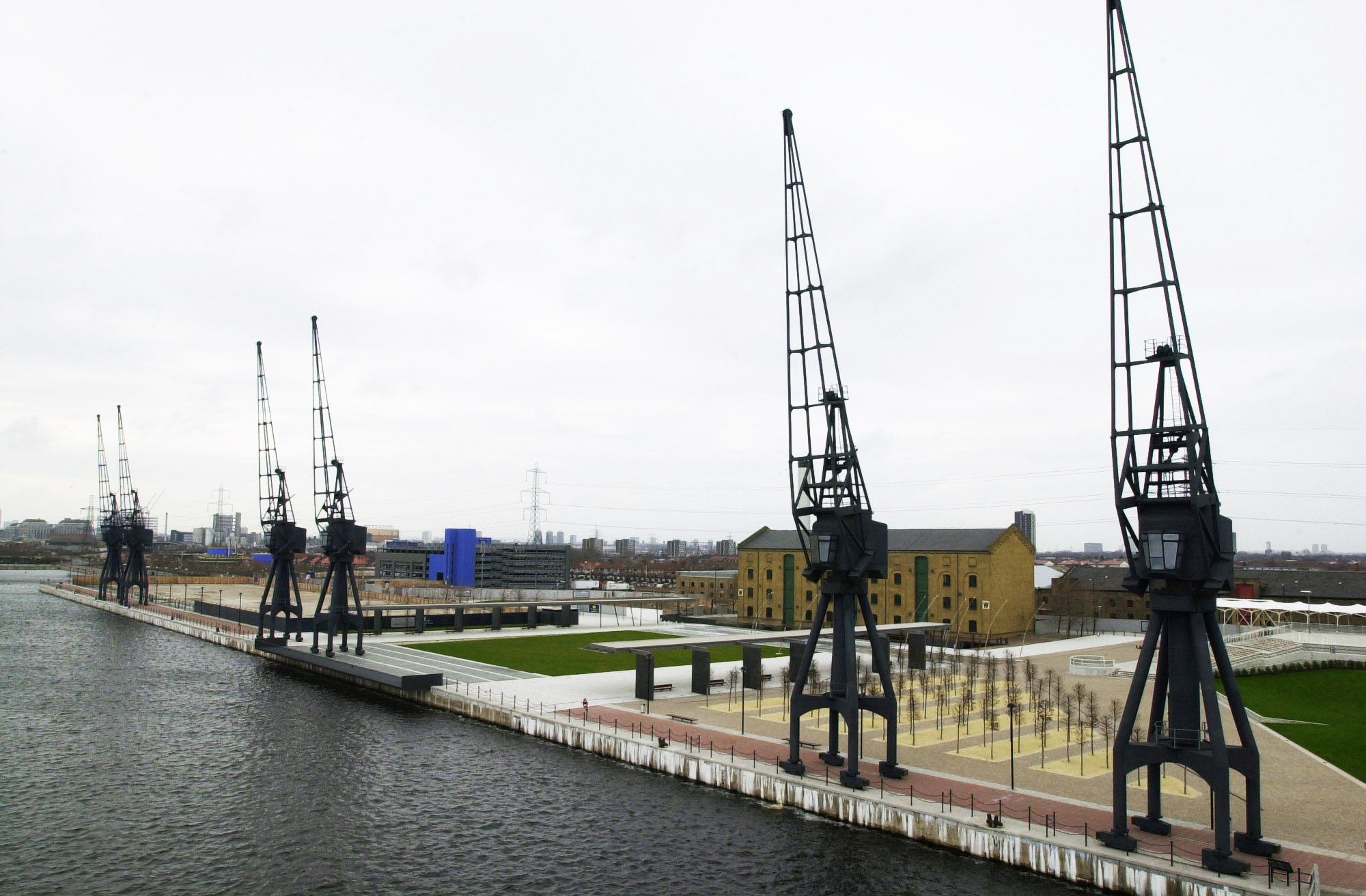
2002.Royal Victoria Dock
From the recent Victoria Dock bridge a view north west of w warehouse and the cranes with land prepared and ready for developments to follow.
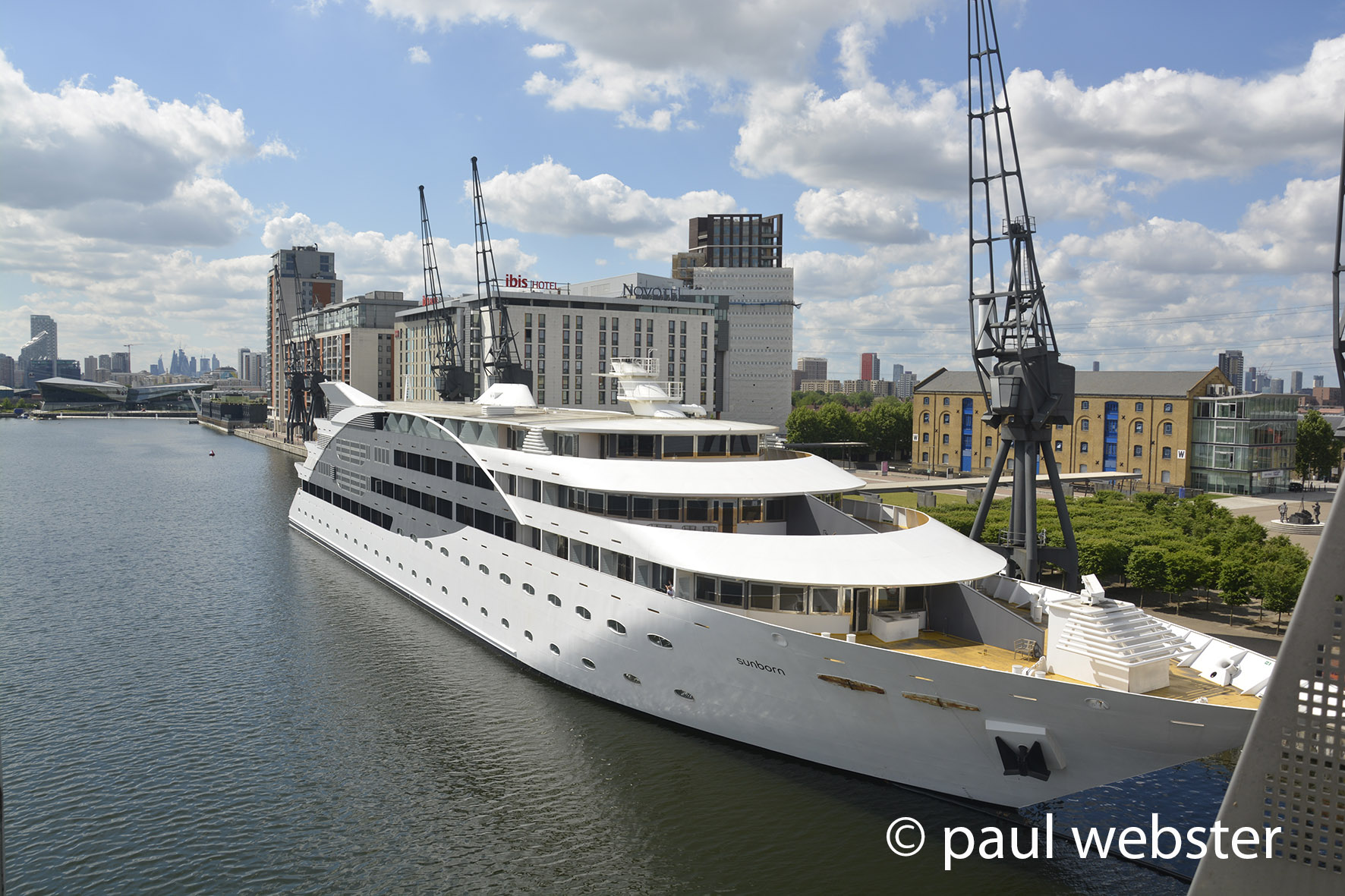
2018. Royal Victoria Dock, Sunborn Hotel
The luxury floating hotel and spa alongside the Excel centre, with further down the Austin David holiday lets and the Emirates Airline. W warehouse, one of the last original buildings has been converted to luxury apartments.

1972. Royal Victoria Dock warehouses
On the quay looking west with on the other side the old flour mills.

2002. Royal Victoria Dock
Looking West from Excel the Royal Victoria footbridge, Canary Wharf towers and the Britannia development can be seen on the south side of the dock.

2018. Royal Victoria Dock looking East
Excel Exhibition Centre is on the right with the luxurious floating Sunborn Hotel beyond, Royal Victoria pedestrian bridge spanning the dock with completed residential apartments on the other side.

1971. Royal Albert Dock
Presently still at work but time is running out for the old dock.

2003. Royal Albert dock
The airport is to the right and construction work on the University almost finished to the left. The docklands light railway can be seen on its return journey to the city from Gallions Reach and Beckton.

2018. Royal Albert Dock
New developments alongside Albert dock include London Borough of Newham Office Block, further extensions to the University of East London and new hotels and offices to be constructed.The London City airport continues to increase flights and improve facilities.
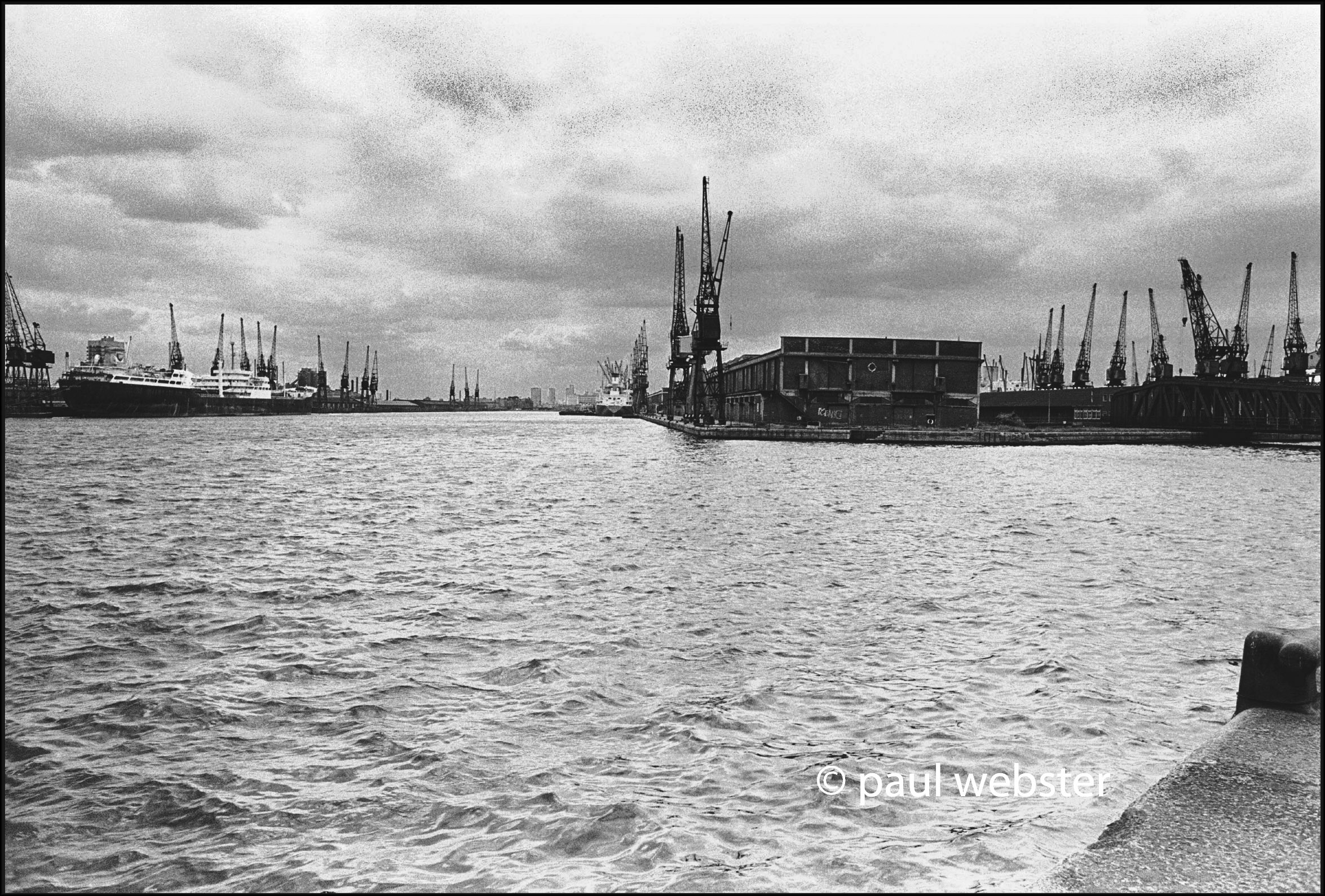
1971. King George V dock
Viewed from the east entrance, still at work.

2003. King George V dock
A plane landing at London City Airport which opened in 1987. The dock itself is now used for many water sports although commercial yachts arrive for the annual boat show now taking place at Excel.
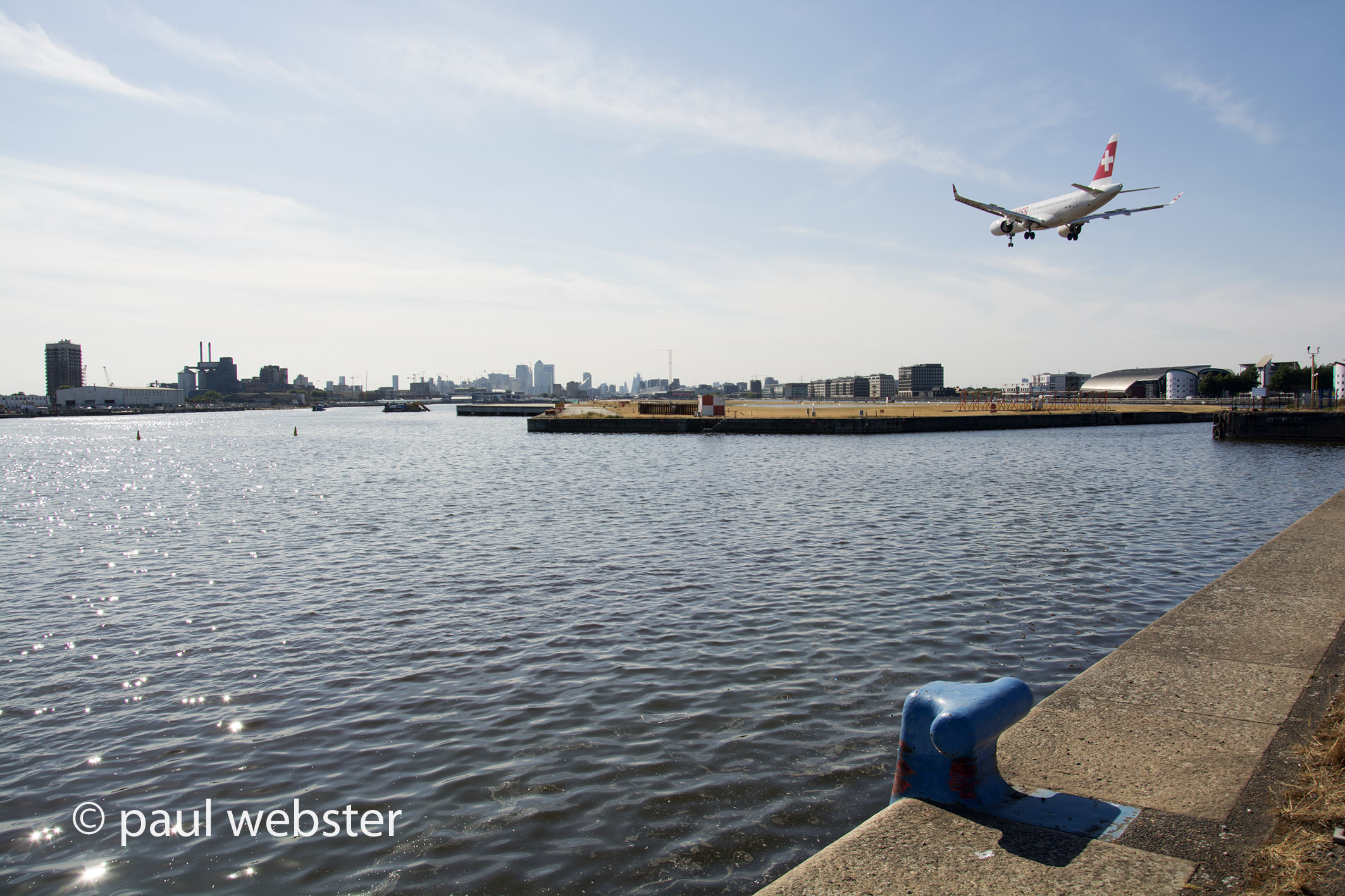
2018 King George V dock, Docklands Airport
The airport continues to expand, whilst I stood there there was almost a plane very 10 minutes landing or taking off. To the south of the dock another large new development has started and on the other side of Albert Dock to the north the expanded University of East London is flourishing and new hotels and offices are appearing.
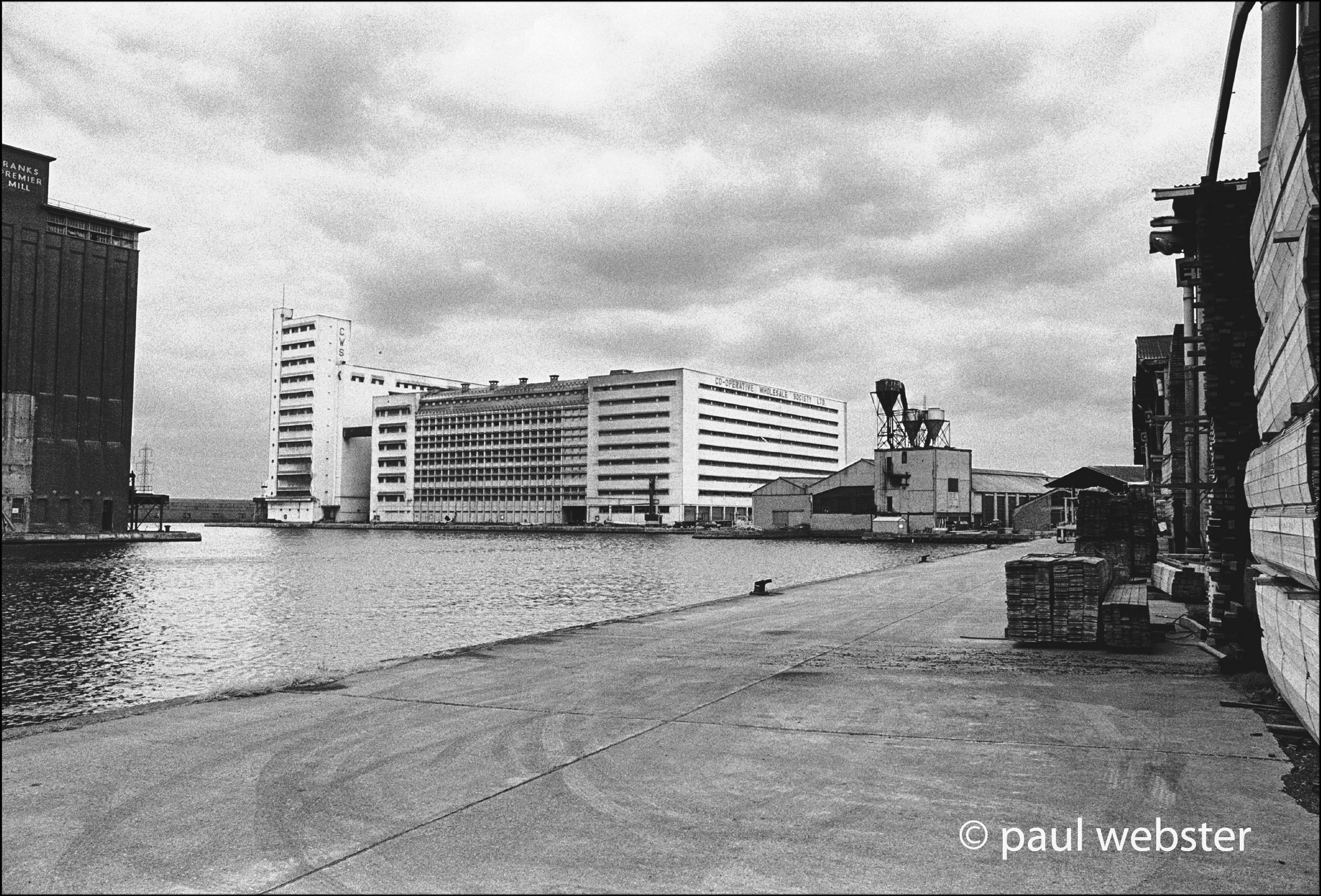
1972. Pontoon Dock
Home of Spillers and CWS mills for flour storage with an entrance to Royal Victoria Dock. This site is awaiting redevelopment by the Silvertown Partnership whose planning application in 2019 has been approved for phase one of construction.

2003 . Pontoon Dock
Mostly demolished ready for a development plan that failed. Another plan has now been approved by the Silvertown Partnership with the old graving dock, a listed building, being retained.

2002. Pontoon Dock, Grain Silo "D"
The grain silo is now a listed structure. It was restored in 1995 and could be a feature of the “Silvertown” development of Pontoon Dock.

1971. Gallions Hotel
Empty and abandoned.

2018 Gallyons hostelry
The old establishment has been refurbished and now flourishes in the centre of residential apartments and marinas.

2003. Galleons Hotel
Apparently to disappear for good as new developments are beginning for a shopping centre, housing and the University.

2018 Galleons Reach, Royal Docks
the pub has now been restored and is surrounded by new residential blocks and a further new developmet still under construction.

Map of the Royal Docks 1972
There were four entrances from the river and multiple mega sized dry docks still working when I paid my first visit to these docks, being downriver a few miles they were the last to be developed apart from the new London City Airport which would soon find a home here.

Map of the Royal Docks 2018
Only one entrance to the river remains navigable from King George V dock and all the dry docks have gone.The Emirates airline links the docks to Greenwich and pedestrians can now stroll across the Royal Victoria footbridge to the busy ExCel exhibition centre. The airport now serves 4.5 million passengers per year with almost 40,000 flights per annum.